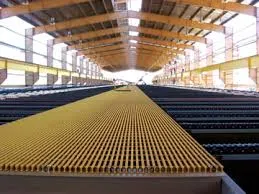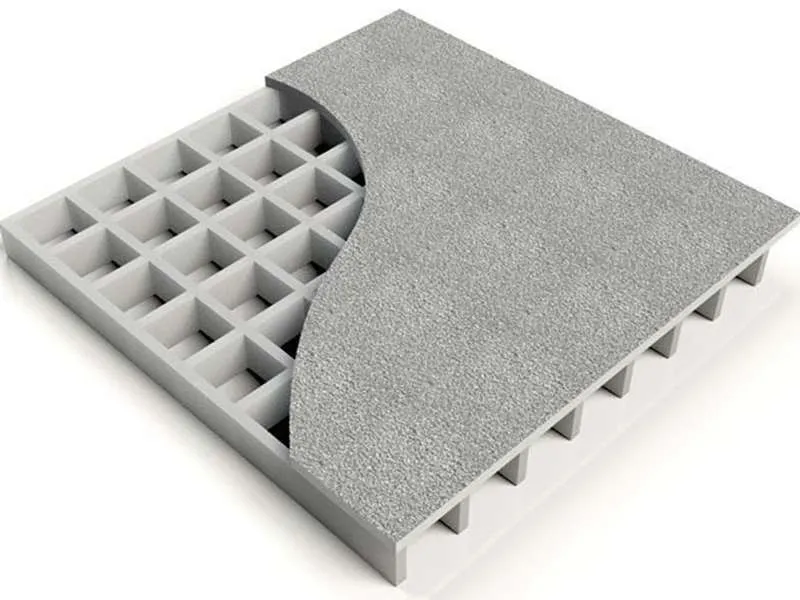
-
 Afrikaans
Afrikaans -
 Albanian
Albanian -
 Amharic
Amharic -
 Arabic
Arabic -
 Armenian
Armenian -
 Azerbaijani
Azerbaijani -
 Basque
Basque -
 Belarusian
Belarusian -
 Bengali
Bengali -
 Bosnian
Bosnian -
 Bulgarian
Bulgarian -
 Catalan
Catalan -
 Cebuano
Cebuano -
 China
China -
 China (Taiwan)
China (Taiwan) -
 Corsican
Corsican -
 Croatian
Croatian -
 Czech
Czech -
 Danish
Danish -
 Dutch
Dutch -
 English
English -
 Esperanto
Esperanto -
 Estonian
Estonian -
 Finnish
Finnish -
 French
French -
 Frisian
Frisian -
 Galician
Galician -
 Georgian
Georgian -
 German
German -
 Greek
Greek -
 Gujarati
Gujarati -
 Haitian Creole
Haitian Creole -
 hausa
hausa -
 hawaiian
hawaiian -
 Hebrew
Hebrew -
 Hindi
Hindi -
 Miao
Miao -
 Hungarian
Hungarian -
 Icelandic
Icelandic -
 igbo
igbo -
 Indonesian
Indonesian -
 irish
irish -
 Italian
Italian -
 Japanese
Japanese -
 Javanese
Javanese -
 Kannada
Kannada -
 kazakh
kazakh -
 Khmer
Khmer -
 Rwandese
Rwandese -
 Korean
Korean -
 Kurdish
Kurdish -
 Kyrgyz
Kyrgyz -
 Lao
Lao -
 Latin
Latin -
 Latvian
Latvian -
 Lithuanian
Lithuanian -
 Luxembourgish
Luxembourgish -
 Macedonian
Macedonian -
 Malgashi
Malgashi -
 Malay
Malay -
 Malayalam
Malayalam -
 Maltese
Maltese -
 Maori
Maori -
 Marathi
Marathi -
 Mongolian
Mongolian -
 Myanmar
Myanmar -
 Nepali
Nepali -
 Norwegian
Norwegian -
 Norwegian
Norwegian -
 Occitan
Occitan -
 Pashto
Pashto -
 Persian
Persian -
 Polish
Polish -
 Portuguese
Portuguese -
 Punjabi
Punjabi -
 Romanian
Romanian -
 Russian
Russian -
 Samoan
Samoan -
 Scottish Gaelic
Scottish Gaelic -
 Serbian
Serbian -
 Sesotho
Sesotho -
 Shona
Shona -
 Sindhi
Sindhi -
 Sinhala
Sinhala -
 Slovak
Slovak -
 Slovenian
Slovenian -
 Somali
Somali -
 Spanish
Spanish -
 Sundanese
Sundanese -
 Swahili
Swahili -
 Swedish
Swedish -
 Tagalog
Tagalog -
 Tajik
Tajik -
 Tamil
Tamil -
 Tatar
Tatar -
 Telugu
Telugu -
 Thai
Thai -
 Turkish
Turkish -
 Turkmen
Turkmen -
 Ukrainian
Ukrainian -
 Urdu
Urdu -
 Uighur
Uighur -
 Uzbek
Uzbek -
 Vietnamese
Vietnamese -
 Welsh
Welsh -
 Bantu
Bantu -
 Yiddish
Yiddish -
 Yoruba
Yoruba -
 Zulu
Zulu
GRP Grating Lightweight & Durable Fiberglass Floor Grating Solutions
- Introduction to GRP Grating and Its Industrial Significance
- Technical Advantages of Fiberglass Floor Grating Over Traditional Materials
- Performance Comparison: GRP Grating vs. Competing Brands
- Custom Solutions for Diverse Industrial Requirements
- Case Studies: GRP Grating in Real-World Applications
- Maintenance and Longevity Best Practices
- Why GRP Grating Remains a Market Leader

(grp grating)
Introduction to GRP Grating and Its Industrial Significance
GRP (Glass Reinforced Plastic) grating has emerged as a cornerstone material across industries requiring durability, corrosion resistance, and lightweight design. Unlike traditional steel or aluminum, fiberglass floor grating combines polymer matrices with glass fibers, delivering unmatched performance in harsh environments. Industries such as chemical processing, marine, and wastewater treatment rely on GRP for its ability to withstand extreme temperatures, UV exposure, and chemical corrosion while maintaining structural integrity.
Technical Advantages of Fiberglass Floor Grating Over Traditional Materials
GRP grating outperforms metals and wood in multiple metrics. Key benefits include:
- 75% lighter than steel, reducing installation costs and structural load.
- Non-conductive properties enhance safety in electrical environments.
- Anti-slip surfaces reduce workplace accidents by up to 60% compared to metal alternatives.
- Maintenance-free lifespan exceeding 20 years, even in saline or acidic conditions.
These attributes make Strongwell grating a preferred choice for industries prioritizing safety and cost-efficiency.
Performance Comparison: GRP Grating vs. Competing Brands
| Brand | Load Capacity (lbs/sq ft) | Corrosion Resistance | Cost per Sq Ft ($) | Customization Options |
|---|---|---|---|---|
| Strongwell | 450 | Excellent | 28-35 | High |
| Fibergrate | 400 | Very Good | 25-32 | Medium |
| Generic GRP | 350 | Good | 20-28 | Low |
Data highlights Strongwell grating as the leader in load capacity and customization, justifying its premium pricing.
Custom Solutions for Diverse Industrial Requirements
Tailored GRP grating systems address specific operational needs:
- Mesh configurations: Adjustable for varying load distributions (e.g., 1"x1" for pedestrian zones vs. 2"x2" for heavy machinery).
- Surface treatments: Grit-coated or resin-rich finishes for enhanced traction.
- Color coding: OSHA-compliant safety markings integrated during manufacturing.
Custom engineering reduces material waste by 15-20% and accelerates project timelines.
Case Studies: GRP Grating in Real-World Applications
Case 1: A chemical plant replaced steel gratings with fiberglass floor grating, cutting annual maintenance costs by 40% and eliminating corrosion-related replacements over five years.
Case 2: Offshore oil rigs utilizing GRP grating reported a 30% reduction in worker injuries due to improved slip resistance and reduced surface heat retention.
Case 3: Municipal wastewater facilities achieved 50-year lifecycle projections for GRP installations, outperforming aluminum systems by 200%.
Maintenance and Longevity Best Practices
GRP grating requires minimal upkeep:
- Bi-annual rinsing with low-pressure water to remove debris.
- UV-resistant coatings reapplied every 10-12 years in direct sunlight environments.
- Structural inspections every 5 years to validate load-bearing capacity.
Why GRP Grating Remains a Market Leader
With a global market value projected to reach $6.8 billion by 2029 (CAGR 4.7%), GRP grating continues dominating sectors where safety, longevity, and ROI outweigh initial material costs. Innovations like hybrid resin formulations and IoT-enabled load monitoring ensure its relevance in Industry 4.0 infrastructure.

(grp grating)
FAQS on grp grating
Q: What are the key advantages of using GRP grating?
A: GRP grating is lightweight, corrosion-resistant, and non-conductive, making it ideal for harsh environments. It requires minimal maintenance and offers high strength-to-weight ratio compared to traditional materials like steel.
Q: How does fiberglass floor grating perform in wet or slippery conditions?
A: Fiberglass floor grating features anti-slip surfaces and excellent drainage properties. Its resin-rich top layer enhances safety in wet areas, while resisting mold and chemical damage.
Q: What industries commonly use Strongwell grating?
A: Strongwell grating is widely used in chemical plants, offshore platforms, and wastewater treatment facilities. Its durability and customization options suit heavy-load, corrosive, or high-moisture applications.
Q: Can GRP grating support heavy loads like metal alternatives?
A: Yes, GRP grating can be engineered to match or exceed the load capacity of steel grating. Its design flexibility allows for varying mesh sizes and thicknesses to meet specific weight requirements.
Q: How is fiberglass grating installed compared to traditional materials?
A: Fiberglass grating is lightweight, enabling easy cutting and installation with basic tools. It eliminates welding needs and can be secured using clips, bolts, or adhesives, reducing labor time and costs.
Latest news
-
FRP Shell Solutions Durable Fiberglass & GRP Shell ProductsNewsMay.22,2025
-
GRP Grating Lightweight & Durable Fiberglass Floor Grating SolutionsNewsMay.22,2025
-
High-Strength GRP/FRP Duct Systems Corrosion-Resistant & DurableNewsMay.22,2025
-
Durable & Corrosion-Resistant Fiberglass Chemical Tanks FRP SolutionsNewsMay.21,2025
-
Fiberglass Pipe Insulation Fittings High-Temp & Energy-Efficient SolutionsNewsMay.21,2025
-
High-Pressure Fiberglass Piping Systems Durable & Corrosion-Resistant FRP SolutionsNewsMay.20,2025









